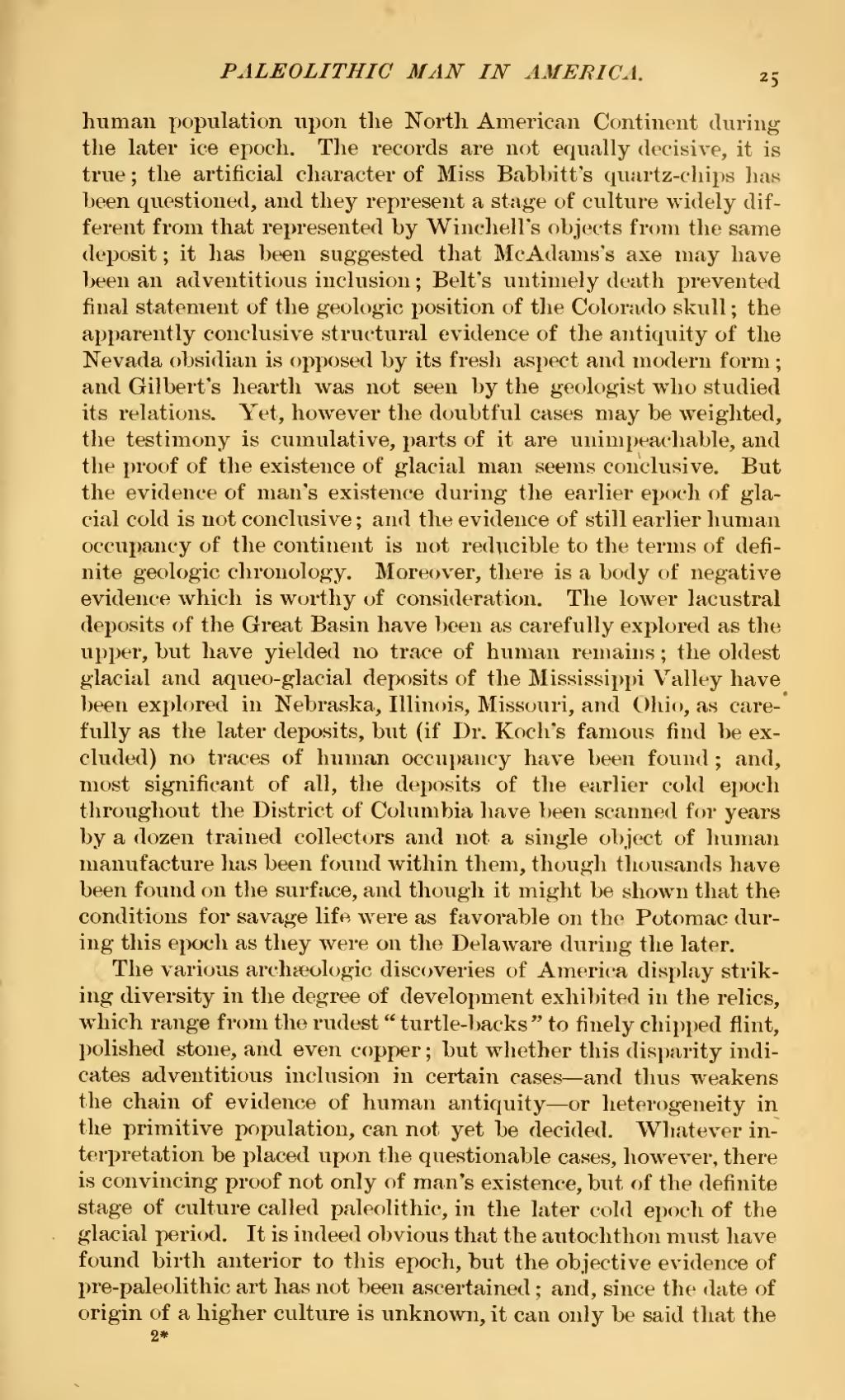human population upon the North American Continent during the later ice epoch. The records are not equally decisive, it is true; the artificial character of Miss Babbitt's quartz-chips has been questioned, and they represent a stage of culture widely different from that represented by Winchell's objects from the same deposit; it has been suggested that McAdams's axe may have been an adventitious inclusion; Belt's untimely death prevented final statement of the geologic position of the Colorado skull; the apparently conclusive structural evidence of the antiquity of the Nevada obsidian is opposed by its fresh aspect and modern form; and Gilbert's hearth was not seen by the geologist who studied its relations. Yet, however the doubtful cases may be weighted, the testimony is cumulative, parts of it are unimpeachable, and the proof of the existence of glacial man seems conclusive. But the evidence of man's existence during the earlier epoch of glacial cold is not conclusive; and the evidence of still earlier human occupancy of the continent is not reducible to the terms of definite geologic chronology. Moreover, there is a body of negative evidence which is worthy of consideration. The lower lacustral deposits of the Great Basin have been as carefully explored as the upper, but have yielded no trace of human remains; the oldest glacial and aqueo-glacial deposits of the Mississippi Valley have been explored in Nebraska, Illinois, Missouri, and Ohio, as carefully as the later deposits, but (if Dr. Koch's famous find be excluded) no traces of human occupancy have been found; and, most significant of all, the deposits of the earlier cold epoch throughout the District of Columbia have been scanned for years by a dozen trained collectors and not a single object of human manufacture has been found within them, though thousands have been found on the surface, and though it might be shown that the conditions for savage life were as favorable on the Potomac during this epoch as they were on the Delaware during the later.
The various archæologic discoveries of America display striking diversity in the degree of development exhibited in the relics, which range from the rudest "turtle-backs" to finely chipped flint, polished stone, and even copper; but whether this disparity indicates adventitious inclusion in certain cases—and thus weakens the chain of evidence of human antiquity—or heterogeneity in the primitive population, can not yet be decided. Whatever interpretation be placed upon the questionable cases, however, there is convincing proof not only of man's existence, but of the definite stage of culture called paleolithic, in the later cold epoch of the glacial period. It is indeed obvious that the autochthon must have found birth anterior to this epoch, but the objective evidence of pre-paleolithic art has not been ascertained; and, since the date of origin of a higher culture is unknown, it can only be said that the
